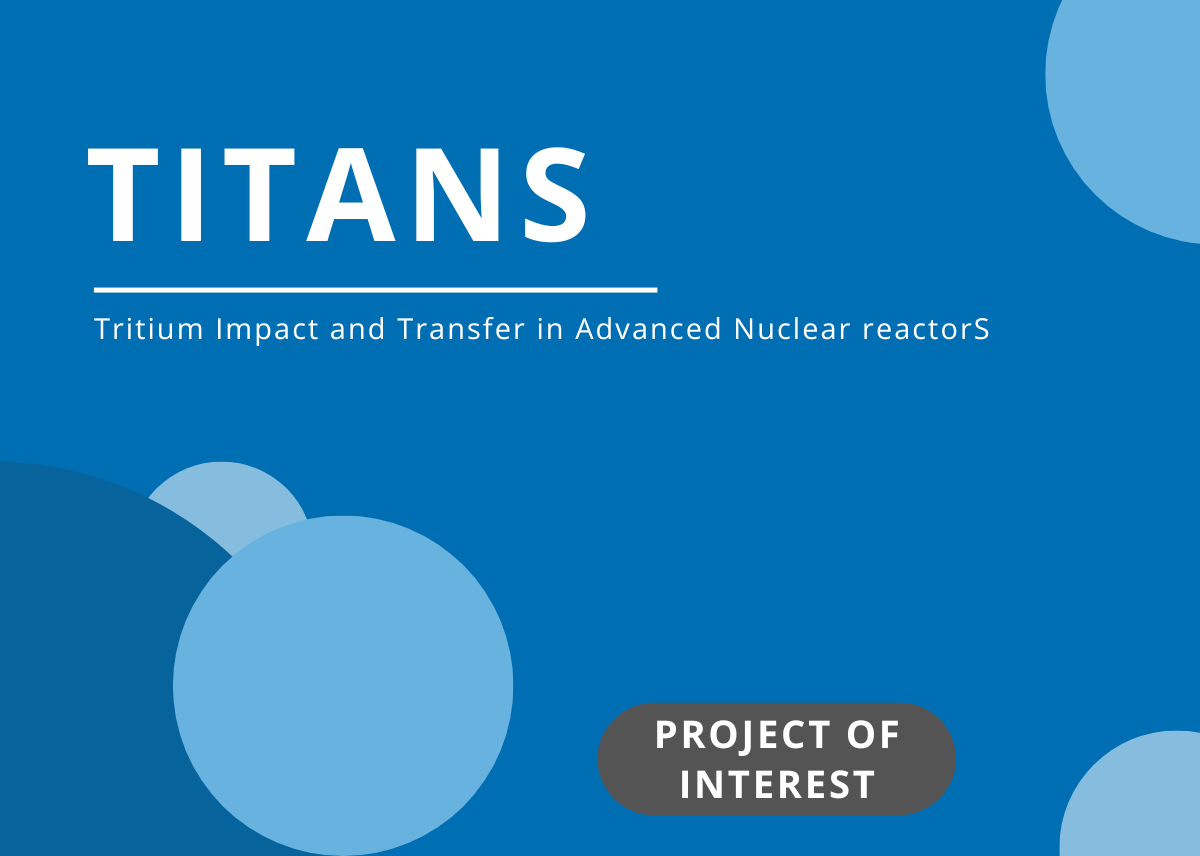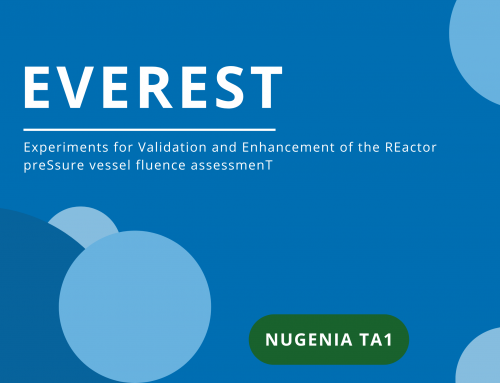
OBJECTIVES
Operation of fusion devices and future GEN IV reactors will generate or use larger amounts of tritium than existing facilities, therefore safety and social acceptability require to tackle potential permeation through the confinement materials and Tritium release in the environment. Consequences of accidental exposure, whether through dispersion in the environment and integration to the food chain, or directly to the workers or population, are to be understood to be able to propose suitable strategies, for instance developing permeation barrier to minimize tritium permeation at source.
TITANS (Tritium Impact and Transfer in Advanced Nuclear reactorS) is a transdisciplinary project carried out by 21 partners from material sciences, process engineering, biology, dosimetry, environmental sciences and modelling, within the framework of Horizon Europe Euratom research and innovation programme. Tritium as all hydrogen isotopes, is highly mobile in most materials; as a radioactive isotope, strong requirements apply to prevent permeation, dispersion in the environment and exposure of workers and population. TITANS aims at contributing to research and innovation on cross-cutting activities required to improve knowledge on tritium management with a multidisciplinary approach at each step of the tritium life cycle: develop tritium release mitigation strategies, improve waste management and refine knowledge in the field of radiotoxicity, radiobiology and dosimetry.
Communication and dissemination of the work is of key importance, with a dedicated work-package to spread the knowledge gained to the various scientific communities and train young or new researchers and engineers to the specificities of tritium, most recently via the 3rd Tritium School.

EXPECTED IMPACT
In addition to permeation barrier, nuclear operators currently rely on trapping systems to minimize release, and most of the tritium is then accumulated as a waste in the form of tritiated water. Developping a tritiated water-processing route to allow the recycling of tritium both minimizes nuclear waste and increases tritium avalaibilty by reusing it, which is highly valuable as it is scarce and potential fuel to nuclear fusion power plants. Another type of nuclear waste is particularly delicate to handle: tritiated metallic dust produced during fusion operation and fusion/fission plant dismantling: adequate conditioning must be conceived to prevent any safety and biological concern during handling and storage.
Decommissioning of nuclear facilities is known to generate fine airborne dust, namely steel and cement aerosols. The presence of tritium in such materials will therefore generate tritiated particles, possibly dispersed in the environment, yet very little studies exist on induced consequences for human/animals/environment contamination.

HIGHLIGHTS
- Conception and set up of innovative experimental devices (KIT permeation cell, magnetron sputtering setup for deposition of multilayer coatings in planar and non-planar geometries at CIEMAT, Total Combustion Facility) and enhancement of existing ones (APRIL, MAUD).
- Comparison between different systems to identify preferable solutions: Gas Chromatography (GC) and TCAP (Thermal Cycling Absorption Process); tritium separation performances for the design of a mobile water detritiation facility; various matrix binder for metallic dust, with identification of materials degradation mechanisms and life expectancy.
- Design of tritium measurements tools (electrochemical sensor and Membrane Gas-Liquid Contactor (MGLC) for liquid metals; Laser-Induced Breakdown Spectroscopy experimental chamber with Vortex Shaker injection for suspended powder T measurements) or validation of measuring techniques (first T measurement on cement particles by Nuclear Magnetic Resonance, validation of reaction cross-sections by Nuclear Reaction Analysis). Most notably, the solid-state NMR investigations provided unprecedented insights into the speciation and isotopic exchange processes of tritium within cementitious matrices and getter systems. Despite the radiological constraints that limit extensive experimentation with tritiated samples, the results confirm the capacity of NMR to probe hydrogen isotope incorporation at the molecular scale, thereby offering a powerful characterization methodology for sequestration materials.
- Comprehensive coupling of coating development for materials to be used in LiPb conditions, concerning corrosion protection and hydrogen isotope permeation and inventory: SiC coating was developed as a promising candidate for Eurofer97 corrosion protection, although additional developments will be needed to achieve an outstanding permeation barrier; the methodology used is set and ready to test additional coatings or innovative solutions.
- Dry and wet dispersion and deposition study of cement aerosols on vegetables was carried out via a developed method for generating particles containing a tracer that can be used in the environment (fluorescein).
- Production of hydrogenated and tritiated stainless steel type 316L and a cement type Portland particles were distributed to allow radiobiology studies complementary in term of T health impact:
- Bioaccumulation experiments following particles exposure in mussels population
- Tritium particle biokinetics by the skin route, dissolution tests in synthetic sweat solutions, and metal permeation into and through the skin after particles deposition for various and skin condition
- Genotoxic effects on human macrophages

PARTNERS
21 partners: CEA; CIEMAT; ENEA; JSI; KIT; LGI; UoP; UKAEA; POLITO; UNIPV; UNR; B&C Tech; INFIN-HH; RATEN; ASNR; UNIROMA; UPM; RINA CSM

DURATION
Duration: September 2022 – August 2025 (3 years)
Budget: € 3 920 492,43

CONTACT

EVENTS
- 3rd Tritium School in March 2024
- Two online Webinars: on tritium transport modeling in October 2024 and dust in February 2025

This project has received funding from the Euratom HORIZON-EURATOM-2021-NRT-01 under grant agreement No 101059408 .




